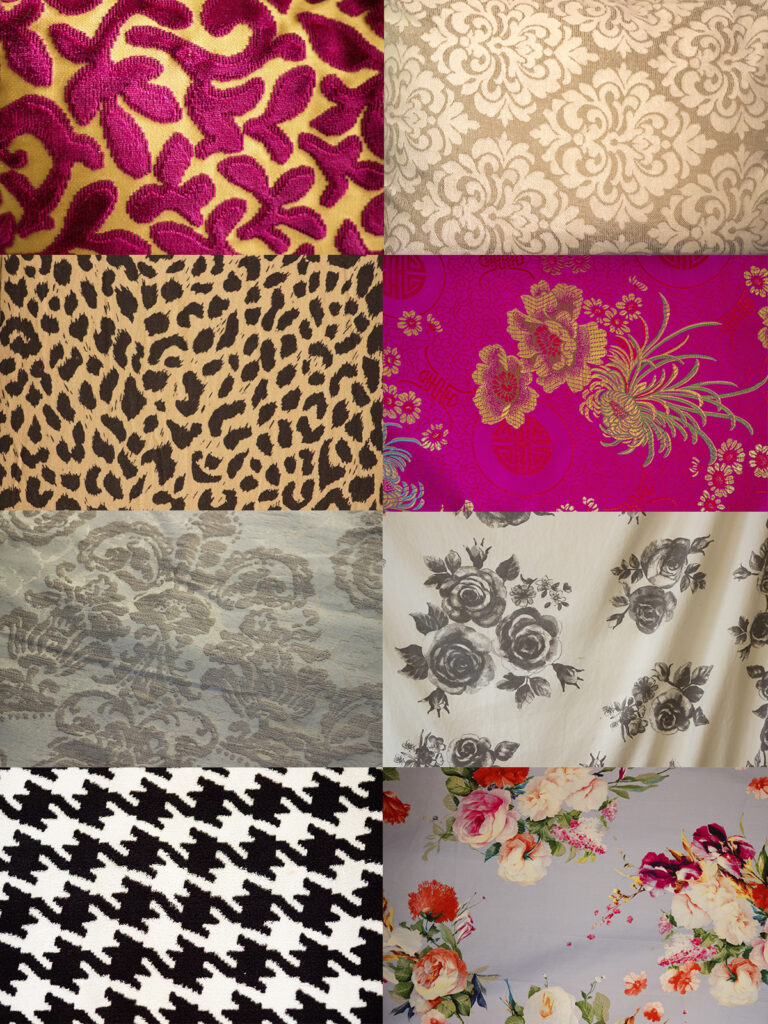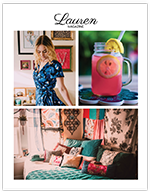We all have that friend who seems to have an eye for decorating. It’s not just that her decor is pretty – there’s a certain je ne sais quoi to the way her home is arranged. You find yourself drawn in to the story of her life, entranced by the assortment of mementos, found items, and unique pieces.
It might seem like magic, but there is a bit of a science behind the art of intrigue. Here a few tips for creating a magical home that captivates your visitors.
Matching sets make a room easier to pull together, but they are far less interesting. The story they tell is, “I went to JC Penney and picked out this set and assembled it.” Mixing furniture from various locations creates more interest and will give your space a traveled feel.
If you don’t have a knack for mixing different pieces together, a good rule of thumb is to pick a few colors or finishes that coordinate and keep everything within that scheme. For example, maybe your bureau is made of finished wood but your shelves and bedside tables are thrift store finds painted black. They coordinate without being super matchy.
Mixing textures is easy and doesn’t require much thought or skill because textures don’t clash. My favorite way to mix textures is to vary the fabrics that I use on my bedding and pillows, but texture is something that can be used throughout the room. The textures in the mix include linen, velvet, velour, pillows with a sheen, leather, wood, metal, patterned glass, beading, woven baskets, and canvas. The variety adds depth and interest.
Can you imagine how boring it would be if I purchased everything of the same material, or if all my glassware was smooth and plain? My room would look flat and uninteresting.

Patterns can be mixed as well! Mixing patterns in a unique way is a great way to leave your own personalized mark on a room. Here are a few basic pattern mixes that work well:
Geometric Pattern (Houndstooth, Stripes, Plaid) + Complex Pattern (Floral, Paisley, Toile)
Animal Print + Floral Pattern
Animal Print + Colorful Geometric Pattern
I personally enjoy stretching the limits when it comes to mixing patterns. My room has a lot of patterns mixed together, some of which seem counterintuitive to combine.
My tricks for mixing patterns are:
1) Keep everything in a certain color family (mine is jewel tones with a few pops of bright neon pink or blue).
2) The way you arrange your items can determine how well they go together. When I’m mixing multiple floral patterns together, I space them out throughout the room. Then, I’ll try to find a specific thing that the two florals have in common – perhaps both patterns have the same shade of blue in them. I’ll add bits of that solid blue around the patterns and it will give them a more cohesive effect.

Before I express this, let me say that I don’t think you can really go wrong with color. A simple palette of black, white, and red can be equally as stunning as a complex set of colors. And while I’m about to lay out a few “guidelines,” there are ultimately no rules about color that are unbreakable. That said, colors can be used to communicate different things. If “intrigue” is what you are going for, I’d say an array of colors is the best choice.
When working with multiple colors, you’ll want to have a good understanding of what tones you are working with. In general, you’ll want to avoid mixing colors that are different tones.
For example, my room has a base of neutral whites and blacks with a variety of jewel tones that include pink, turquoise, purple, and deep blue. I wouldn’t mix a primary red in with these jewel tones. I also wouldn’t use powder blue or pale yellow. All of my major decor is deeply saturated jewel tones, and I don’t stray too much from that.
And yet one more trick: if green isn’t already a part of your color scheme, adding plants is a great way to pull in yet one more color without clashing. Besides color, plants add a whole new level of life to your room.
Your favorite photographs, mementos, or greeting cards tell the story of who you are, so put them on display! You want to have a few pieces of artwork or personal history on display that will give your visitor a reason to pause and reflect.
A photo wall, favorite poem, or interesting piece of art displayed right at eye level will pull them in and give them reason for a second glance. The more an item causes your visitor to pause and give time to viewing it, the more they will become pulled in to your story and will begin to wonder about who you are.

